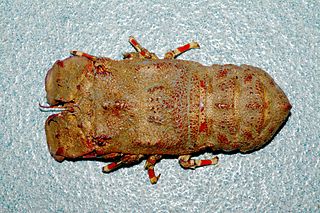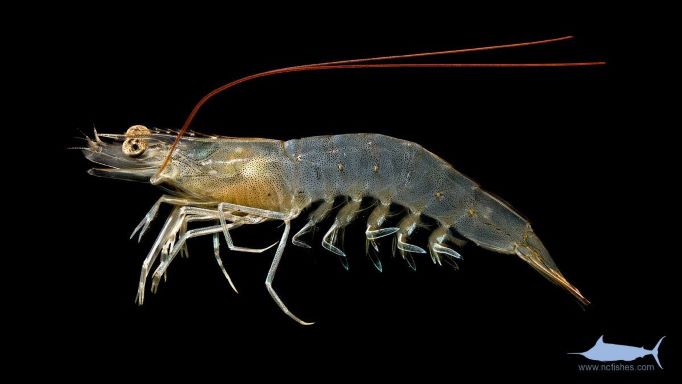Shrimps, Crabs, and Lobsters
The Northern Gulf of Mexico is home to about 15 relatively common species of shrimp. In terms of abundance, the brown shrimp, white shrimp, and pink shrimp are easily the most common species of shrimp in the shallow, inshore waters of the Gulf. However, unless you are a shrimper, you are not likely to encounter these species in a casual swim or beach walk. If you do, the information below will assist you in identifying the species. Other shrimps in the Gulf of Mexico that are not as obvious are the grass, mantis, pistol and cleaner shrimps. There are over 40 species of crabs in the northern Gulf of Mexico. Beach-goers have no doubt seen hermit crabs, ghost crabs, and blue crabs as they can be very common along beaches and marshes. Finally, only two species of lobster are found in the northern Gulf of Mexico.
Shrimps
The three most common shrimps are the white, pink, and brown shrimps. There are also several kinds of grass shrimps, brine shrimps and mantis shrimps. (Shrimp images courtesy of North Carolina Fishes (ncfishes.com).
White shrimp are light gray, with green coloration on the tail and a yellow band on part of the abdomen. The carapace is not grooved. See image below and compare the white shrimp with the grooved carapace of a pink or brown shrimp. The antennae of white shrimp are very long, two or three times the body length.
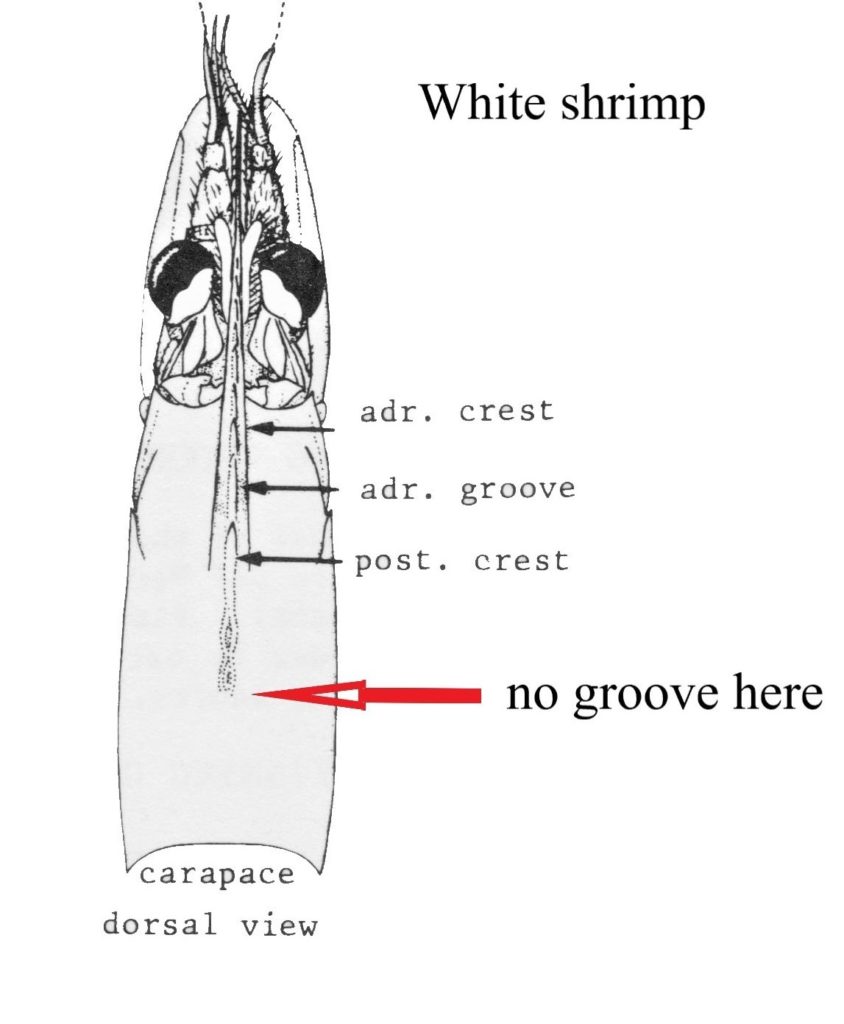

Pink shrimp differ from white shrimp by having a grooved carapace (see the image below). Their most distinguishing characteristic is the dark spot on each side of the tail, between the third and fourth segment.
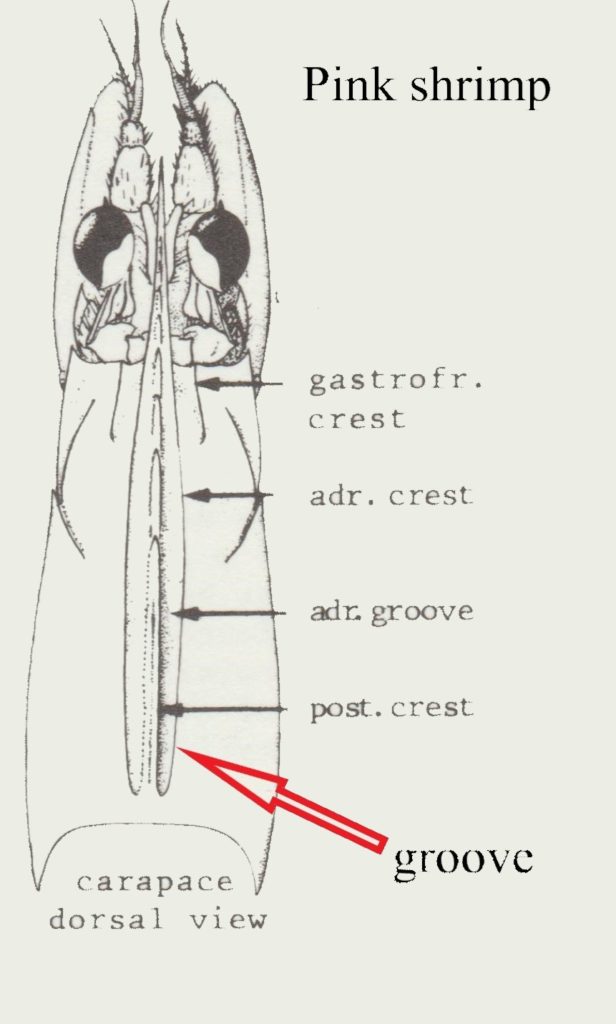
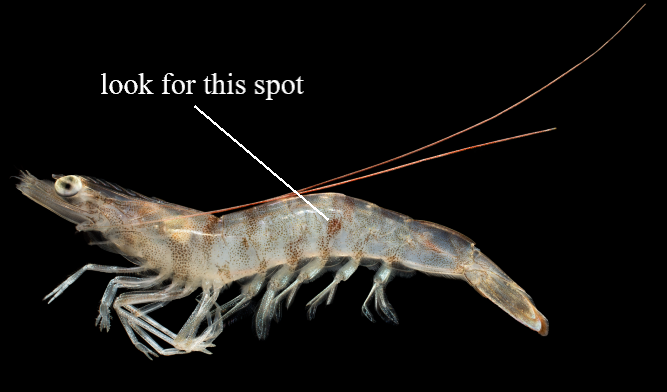
Brown shrimp also have a grooved carapace like pink shrimp but don’t have the dark spot on the tail. They are also more brownish or reddish in coloration and the coloration is most prevalent on the ends of the fan-like tail.
Mississippi Grass Shrimp are found in fresh and brackish waters along the entirety of the northern Gulf of Mexico. They are small (about 50 mm) translucent (sometimes clear) shrimp having tiny red specks throughout the body on some. Image by D. Weisberg, U. of Pennsylvania and USGS.

Rock shrimp Rock shrimp are thus named for their hard shell. They are found in deeper waters but can be found in a few meters of water. Most are found between 25 and 65 meters depth. They prefer a sandy habitat and thus are more common in the northern Gulf of Mexico east of the Mississippi Delta. Image: Public Domain by unknown author.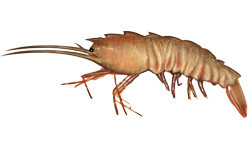
Mantis shrimp There are about 25 species of mantis shrimps in the Gulf of Mexico but in the northern Gulf of Mexico the “thumbsplitter” is the most common in inshore waters. This shrimp would most likely be encountered by shrimp trawlers as they prefer to burrow into mud and sand bottom and are not often seen by typical beachgoers. Two elongate appendages with barbs are used to spear prey items.
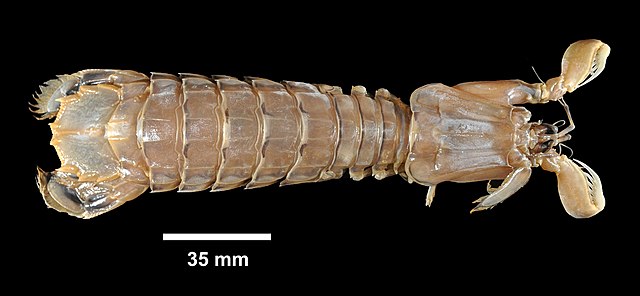
Tiger shrimp See “Invasive Species that Might be Encountered in the Gulf of Mexico” page. Image courtesy of South Carolina Dept. of Natural Resources.

Crabs
Blue crab Arguably the most common crab in the shallow waters of the Gulf of Mexico, the blue crab supports a very large fishery. These crabs are brightly colored with red and blue claws and blue legs and swimmerets. Image by Junglecat, Wikimedia Commons.
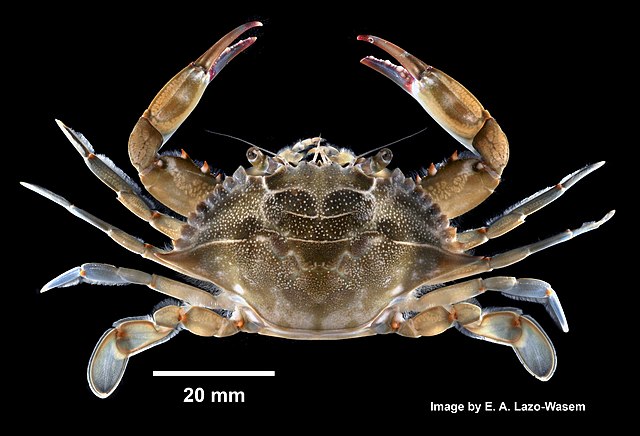
Horseshoe crab Looking like a creature from a “B” sci-fi movie, horseshoe crabs are actually completely harmless and in fact, provide an extremely valuable product derived from their blood that helps to detect contamination during the production of pharmaceuticals. Image by Kaldari, Wikimedia Commons.

Ghost and Fiddler crabs. Ghost crabs (left) and Fiddler crabs (right) are commonly found inhabiting beaches, estuaries, marshes, and bays. These land crabs may be observed emerging from burrows that they dig into beaches (ghost) or along estuaries and marshes (fiddler) at sundown since many of these crabs are nocturnal. The fiddler crab is named for its over-sized claw. Images: Left:


Hermit crab Hermit crabs are very common in many areas of the northern Gulf of Mexico. These crabs take up residence in abandoned gastropod shells which they carry until they out-grow them whereupon they find a larger abode and quickly slip into it. Photo courtesy Texas Parks and Wildlife Department, (Brenda Bowling), 2012-2020.
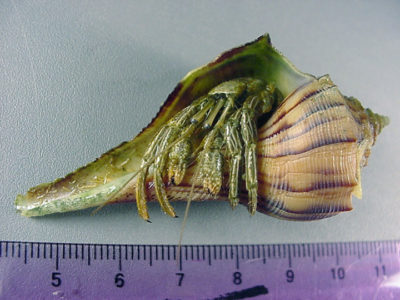
Stone crab Stone crabs are prized by both commercial and sport fishers. These crabs support an important commercial fishery in Florida. Their large powerful claws are harvested and the crab is released alive.
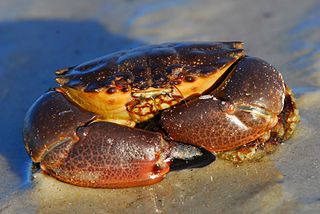
Mole crab or Sand flea. These small crustaceans, which are technically not crabs, can be seen moving rapidly up and down the wash zone of sandy beaches. Image by Chan T. Y. & Lin C. W., Wikimedia Commons.
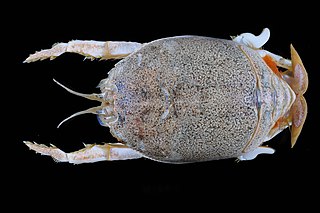
Box crab. The Calico crab is a type of box crab of which there are several species in the Gulf of Mexico. The tan carapace with reddish brown spots make this crab unmistakable. Photo courtesy Texas Parks and Wildlife Department, (Brenda Bowling), 2012-2020.
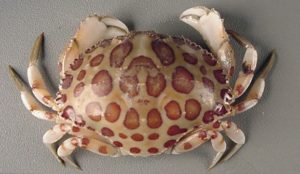
Mud crab. The mud crabs, such as the saltmarsh mud crab (below) are relatively small. This crab has a carapace that is oval and is wider than it is long. The carapace may be blueish, maroon, purplish or dark brown.
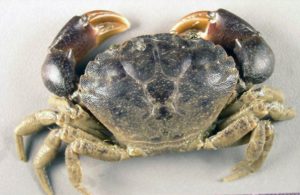
Spider crab. Spider crabs have a round carapace that appears pointed at the anterior end. They are brown in color, and have many tubercles, spines, and bumps on the body. They are spider-like in appearance owing to their long walking legs and round body.
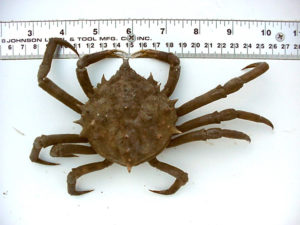
Lobsters
Spiny lobster The Caribbean spiny lobster is not often found in shallow waters of the northern Gulf of Mexico but is not uncommon in deeper waters and is more plentiful in Florida. Covered with numerus spines and nodules, this lobster has long antennae and sharp frontal horns over the eyes. Color is variable, may be mottled with tan, brown, reddish, bluish or greenish. Four yellow spots on abdomen. Image: Adam, Wikimedia Commons.
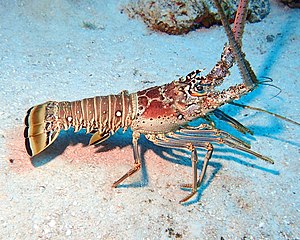
Slipper lobster The slipper lobster is rarely seen by the casual naturalist and only occasionally taken by shrimp trawls. They are found in deeper waters. Found in deeper waters, these lobsters have a flattened body, pebbly texture, a large carapace (head), short legs that are red banded. An unmistakable species that is sometimes taken in traps set for spiny lobsters. Image: Brandi Noble, NOAA Pascagoula, MS.
